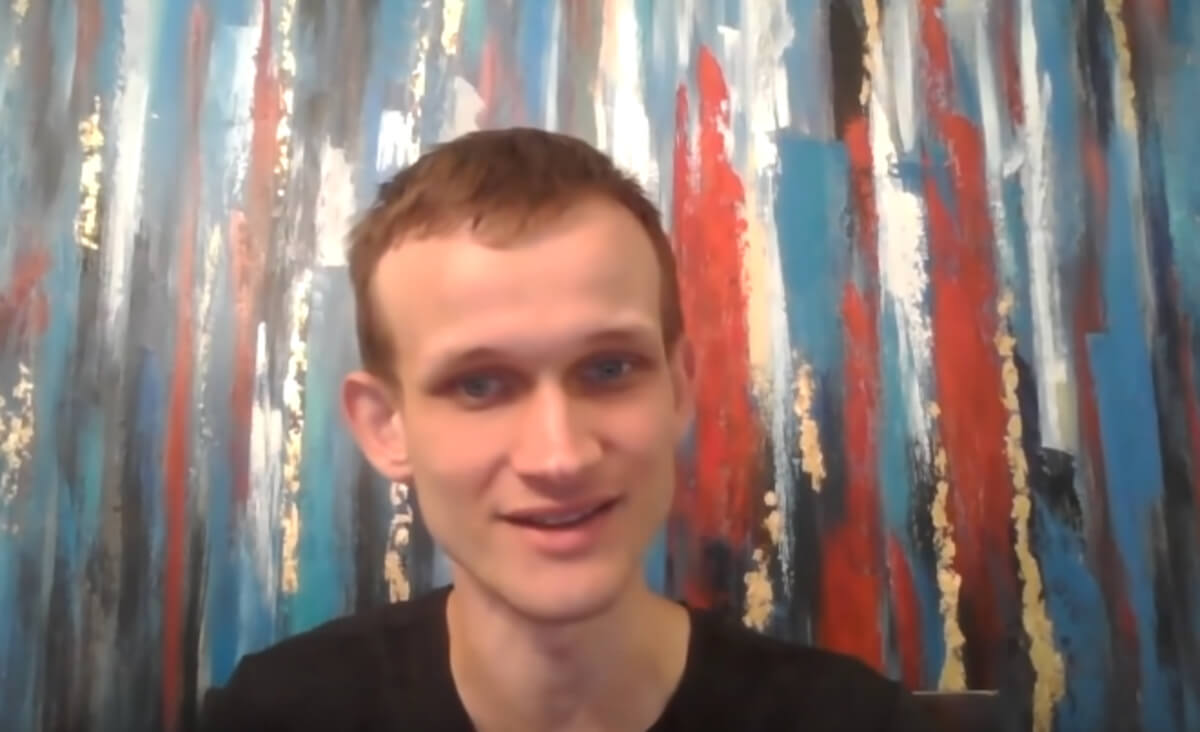Ethereum is Halfway Towards its ‘Grand Vision’ – Vitalik Buterin

Ethereum (ETH) co-founder Vitalik Buterin has evaluated Ethereum’s progress towards its vision to become more scalable and secure while preserving decentralization, asserting that it is some 50% of the way there.
During an episode of the Bankless podcast, Buterin detailed that Ethereum’s progress would reach 60% after the Merge, when the current Ethereum Mainnet “merges” with the beacon chain proof-of-stake (PoS) system, and would pass 80% once there is a full sharding implementation, which would split the network into multiple portions called ‘shards.’
“I would say around 50 [%]. I’d be willing to go past 60 once the merge is fully complete, and I’d be willing to go past 80 once we have a full sharding implementation,” Buterin said when asked to grade the roadmap progress to date – towards what the podcast host David Hoffman described as “the grand Ethereum vision for what it wants to be.”
In early December, when celebrating the proof-of-stake Beacon Chain’s birthday, Buterin released “an updated roadmap diagram for where Ethereum protocol development is at and what’s coming in what order.”
Happy birthday beacon chain!
— vitalik.eth (@VitalikButerin) December 2, 2021
Here's an updated roadmap diagram for where Ethereum protocol development is at and what's coming in what order.
(I'm sure this is missing a lot, as all diagrams are, but it covers a lot of the important stuff!) pic.twitter.com/puWP7hwDlx
As per the roadmap, the first stage is the Merge, which is projected to happen around May or June 2022 if the code is completed by February. This update will ‘merge’ the Beacon Chain into the mainnet and finalize the transition to PoS.
As previously reported, the Ethereum blockchain’s Kintsugi Testnet went live in December, allowing users to test and prototype the Merge. Ethereum core developer Tim Beiko called Kintsugi “a longer-lived public testnet,” and asked the community to experiment and familiarize themselves with the post-merge environment.
Buterin also revealed that after the Merge there would be a Post-Merge hard-fork, which would enable the withdrawal feature for validators who have locked their ETH so far. He said that the Post-Merge hard-fork could happen around six months after the Merge itself.
The next stage is the Surge, which is all about increasing scalability for roll-ups through sharding. Roll-ups are layer-2 scaling solutions that try to improve the Ethereum network by taking computation and storage off-chain. Sharding, on the other hand, refers to the process of dividing traffic across 64 new chains, thus spreading the network load and increasing speed while lowering costs.
Layer 1 (L1) is the base protocol (the Ethereum blockchain), while Layer 2 (L2) is any protocol built on top of Ethereum.
Buterin noted that with the expansion of the number and the size of shards Layer-1 gas fees might finally come down, but only in the short term. He said that “realistically in the long term using Layer-1 is just going to keep getting more and more expensive.”
He then concluded that Ethereum users should prepare for the fact that Ethereum is already transitioning away from being a “Layer-1-centric ecosystem toward being a Layer-2-centric ecosystem.” He added that the gains from switching to Layer-2 will only increase over time, which will eventually push all the activity onto Layer-2.
Meanwhile, Buterin discussed the rise of alternative Layer-1s, or so-called “Ethereum Killers.” He acknowledged that there has been a lot of demand for scaling and cheap blockchain space over the past year, which explains the meteoric rise of newer blockchains like Binance Smart Chain (BSC), Solana (SOL), and Avalanche (AVAX).
It is worth noting that a large portion of Layer-1s trade off decentralization for bandwidth and speed. For instance, on BSC, there are 11 validators on the testnest and 21 validators on the mainnet. Meanwhile, Etheruem surpassed 200,000 validators back in July 2021.
However, Buterin argued that people won’t care about decentralization if it “costs USD 8 per transaction.” Back in 2017, Buterin had said that “the internet of money should not cost 5 cents a transaction.” He reiterated this again too, saying that once sharding comes, transaction fees would be much less than cents 5 again.
____
Learn more:
– Vitalik Buterin Over the Past Decade: How Right or Wrong Was He?
– Vitalik Buterin’s ‘Endgame’ Roadmap Will ‘Take Years to Play Out’
– Another Step Towards ETH 2.0: Ethereum Devs Ask the Community to Test on Kintsugi Testnet
– Crypto Industry Insiders Share Top Ethereum, DeFi, Gaming, and TradFi Trends for 2022
– Bitcoin and Ethereum Price Predictions for 2022
– How Global Economy Might Affect Bitcoin, Ethereum, and Crypto in 2022




